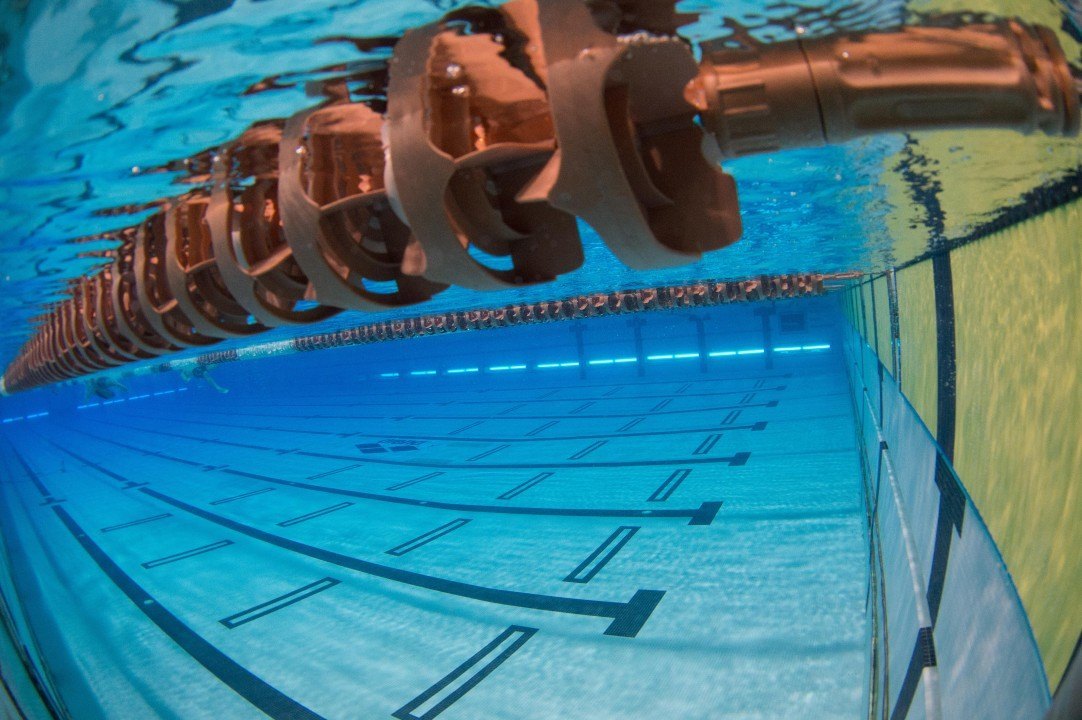U.S. Secretary of Education Betsy DeVos announced the Trump Administration’s final regulations for how Title IX governs sexual assault cases on college campuses.
The topic has become more and more pressing as sexual assault allegations have become more reported on college campuses. We’ve seen the movement cross into swimming news – and it’s put schools in a precarious position to balance the safety and protection of alleged abuse victims with the rights of accused students.
One notable swimming example: a Texas A&M student criticized her school’s handling of her sexual assault allegation against a member of the swimming & diving team. Hannah Shaw took to Twitter to express her anger that A&M swimmer Austin Van Overdam was only given a six-month suspension after the school’s Title IX office found him responsible for sexually assaulting Shaw. On the flip side, Van Overdam sued Texas A&M, claiming the school’s investigative process was discriminatory.
That’s been a common theme across the country and has made the standard of evidence a hot-button issue in campus sexual assault cases. Until 2011, schools generally required “clear and convincing evidence” to find a student responsible for sexual assault. In 2011, the Obama Administration gave colleges new guidelines, instructing schools to use a lower “preponderance of evidence” standard, meaning a student would be found responsible for sexual assault if there was a greater-than-fifty-percent chance that a claim was true.
Though none of these guidelines are binding, the new Trump Administration recommendations allow schools to choose between the “preponderance of evidence” and tougher “clear and convincing proof” standards. Here are some of the key changes in the new Title IX guidelines:
- Schools can choose between the “preponderance of evidence” and “clear and convincing proof” standards for finding a student responsible. The New Yorker notes that since schools were previously using the preponderance of evidence standard, it wouldn’t be surprising to see most schools keep that standard even though another option now exists.
- Students accused of sexual assault are now given the right to cross examine those who accuse them. (The rules still shield alleged victims from face-to-face examinations). Some argue that this will discourage alleged victims from making reports, but others say it makes the process more fair to accused students.
- Anyone can now report incidents: alleged victims, friends, parents, or a bystander.
- Colleges and universities are now responsible for incidents that happen off-campus, if the school owns or is affiliated with that property.
- Per The New Yorker, the new standards allow schools to use informal resolutions like mediation, if both parties agree to it, and neither party is a school employee. Some argue that schools will push alleged victims to agree to informal resolutions to save costs and avoid difficult investigations. But others say that some alleged victims are reluctant to report sexual misconduct because they fear a lengthy investigation or a harsh punishment for the accused, and might be more likely to make a report if an informal option is available.
- Schools can no longer use an “investigator-only” approach in which one person acts as investigator and decision-maker. And schools must now hold a live hearing in which both the accuser and accused can participate (virtually, if they wish).

This continues to be a disaster for both victims and accused. Universities are not competent in this arena.
https://swimswam.com/student-criticizes-texas-ams-handling-of-sexual-abuse-sanction-on-swimmer/
If you examine the document that says mitigating circumstances you will see that the complainant (Hannah Shaw) supports a lighter sanction and perceived a lack of malice on the charged student.
and?